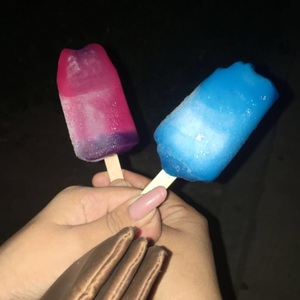The Indian repertoire is a tug of war between the beloved dishes scrutinized as a palate of their own creation and the rest of the dishes risen from elsewhere, meticulously crafted to pamper the taste buds of its people. But, what’s fascinating is the journey of all these dishes which sailed from different parts of the world and traveled the test of time to reach the Indian shores.From the country’s favorite sweet Jalebis to the cream of all things savory like Samosas, did you know that these Indian Delicacies are not really Indian? Here’s a mash-up of a few every-day dishes which we forgot were from overseas.
1) Samosa
Origin: Middle East
One of the most globally renown, Indian snack is the Samosa. Sandwiched with mashed potatoes and seasoned with a delicate tinkle of spices, evening tea is almost impossible without a bite of Samosa.
Termed as ‘Sambosa’, Samosa found its way to India in the 14th century with a little help from the traders of the Middle East.
Today we have adopted ‘sambosa’ adding our own twist to the Middle Eastern dish which we enjoy today.
2) Vindaloo (Goan style meat curry)
Origin: Portugal
The gorgeous beaches and trance parties alone ain’t enough to describe the beautiful land of Goa. The beauty lies in the succulent pork Vindaloo simmering away at a Goan Kitchen waiting to hit the beach shacks filled with hungry travellers.
Vindaloo is one of those scrumptious treasures the Portuguese left behind for us to feast our hearts out on.
Imagine the pungent scent of slowly cooked meat gently immersing from the Goan households. The aroma of freshly cooked Vindaloo spreads onto the streets of Goa every Easter as it is a deeply adored festive dish.
The name Vindaloo has its Portuguese origin from ‘carne de vinha d’alhos’, a Portuguese meat dish of pork marinated in wine and garlic. The Goan version of this meat curry is prepared using palm vinegar as a substitute for red wine and a dash of Kashmir chillies.
3) Jalebi
Origin: Persia`
Ah! Those warm, vibrant, sugar coated rings of deliciousness! Is there anything more you could ask for Diwali? While the Northern half of India loves their Jalebi, super thin and crispy, the Southern Indians savour a thicker version of it with a slightly variant shape.
This desi mithai, originally hails from the Arab regions and Persia. Famous by the names ‘Zalabiya’ in Arabic and ‘Zalibiya’ in Persian this sweet treat is surprisingly an innovative take on the Persian and Arabic delicacies.
Jaangiri and Imartee are variations of the Jalebi. The dish was brought to India by Persian-speaking invaders. Ernest A Hamwi, a Syrian immigrant in the United States, is believed to have used the Persian version ‘zalabia’ as an early ice cream cone.
4) Achappam (Kerala style Rosette cookies)
Origin: Scandinavia
Rosette cookies, affectionately tagged as Achappam by the Keralites of India are thin, fried cookie dough traditionally made during Christmas time in Kerala. They are made using intricately designed irons.
Known by the name ‘Struva’ in Sweden, ‘Rosettes’ in U.S and
‘Buñuelos’ in Mexico, these crispy crunchy cookies are said to be of Scandinavian (Swedish and Norwegian) origin. Achappam is a justifiable indulgence regardless of its birth place and a few slight alterations in the recipe across the world.
5) Chicken Tikka Masala
Origin: Scotland
If there’s a way to please a Punjabi, it’s definitely a scoop of Chicken tikka masala! Legend has it that the dish has traveled a great deal of distance and time to reach the Indian subcontinent.
Long ago in a Scottish city called Glasgow in U.K, Chef Ali Ahmed whipped up a tongue searing improvisation of a dry chicken dish to please his customer. Needless to say, the customer went head over heels for the dish that he kept returning time after time to cherish the taste of it. Ever since, the dish has been shooting a hole in everyone’s hearts driving them crazy for Chef Ali’s masterpiece invention.
6) Shukto (Bengali style mixed vegetables)
Origin: Portugal
It ain’t no sweet dish but let me tell you a sweet secret. This preparation is the queen of all vegetarian dishes among the Bengali clan. Gently cooked in the most unique spices, with creamy white gravy and a tint of balance between the sweetness and the bitterness of the ingredients, this lip smacking dish traces its origin to Portuguese cuisine.
During the Portuguese rule in India, they used a dish made of bitter gourd as a special mouth freshener. The Bengalis adapted the dish, sprinkling their own magical condiments into it giving rise to the delicious, Shukto.
7) Chai
Origin: China
You might want to grab your selves a cup of Chai before reading this one. Chai is every Indian’s guilty pleasure. Only a sip of steaming hot chai can get you through a pile load of work on your desk. Did you know that the credit to this drink goes to China?
There is no doubt that China is home to a wide range of tea.
Firstly used as a medicinal drink in china then sailed to India and took the form of ’Chai.’ Of course our ancestors tried their hand at innovating the drink and miraculously converting it into the humble comfort beverage we enjoy today.
8) Rajma Chawal (Kidney Beans in gravy and Rice)
Origin: Mexico
Reading the title alone, clouds deep thoughts and an ounce of confusion in our minds.Have you ever wondered the unique ingredient which goes into this mouth watering meal? Bingo! The Kidney beans (Rajma).
Kidney beans are one of the most crucial ingredients in Mexican cuisine. Long back, the bean was first brought to India through Central Mexico and Guatemala. History certainly unravels a story to the food we eat today but, will not make a difference to our burning love for Indian food, which is way beyond words to describe. Don’t you agree?


